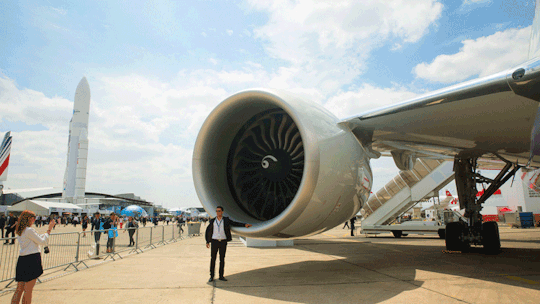Jets engines provide an amazing operational longevity
A jet engine last an average of 8 years of uninterrupted flight, as if it flew 24 hours a day 7 days a week during 8 years. In such a time, reckoning and average speed of 800 km/h, a jet engine thrust an airplane for 800km x24h x365 days x8 years = more than 56 million km, roughly 35 million miles. A car engine can seldom exceed 200,000 miles, or 362,000 km.
The rate of engine failures per kilometer is about a thousand times inferior to that of internal combustion engine failures. Yet a remarkable number of people still fear for their life when flying, notably because they mistrust jet engine safety.
When I graduated in international law, I made some research on air navigation law. I was surprised to notice that at that time, roughly 1990, a country like Italy used to lose 20% of its potential flyers because of airplane crash anxiety.
One of the most widespread fears concern bird strikes
This fear is not at all unjustified. Indeed every 2 or 3 years we hear of an accident caused by a bird striking a jet engine. The last one occurred on 16th August 2019, in Russia, near Zhukovsky airport. An Airbus A321 was moments into its flight, after taking off from Moscow’s Zhukovsky airport, when a flock of gulls got sucked into its engines, causing both to fail. There is a rubbish dump that attracts birds, just 2km (1.2 miles) from Zhukovsky airport, according to Vedomosti. Other Russian dailies also point to illegal rubbish dumps near airports as a serious hazard.

How big is the risk of bird strikes?
Russia’s Vedomosti daily reports that in 2017 there were 411 bird strikes in Russia, and last year 1,021. But it is a daily hazard in aviation worldwide.
Data from the Civil Aviation Authority (CAA) shows there were 1,835 confirmed bird strikes in the UK in 2016, and 1,380 in 2012. As in Russia, the number has been steadily rising, suggesting a link with the growth in air traffic. Idem in the U.S. There have been 2,586 bird strikes from 1990 to 2012 just at JFK airport, New York. From 1990 to 2012, the number of bird strikes in the U.S. increased more than five-fold. I think that the continuos increase of jet engine size has something to do with that. The bigger the engine, the more is likely to suck birds.

Very seldom bird strikes cause engine failures
Indeed most of the times even big birds are chopped and “digested” by the compressor fan positioned at the front of the engine. As you can see in the video below, jet engine manufacturers test their products literally shooting turkeys and other birds into working engines.
Why bird strikes are less likely with private jets

Simply because private jets engines are much smaller, therefore is much easier for birds to avoid being sucked, especially those big and midsized birds that most frequently damage the engines.
Another common fear: rain and hail or snow causing a jet engine fail
Again, in the before mentioned video, you can see that jet engines are tested pumping 4 ½ tons of water per minute into them, while working. As for hail, three-quarter of a ton per minute is what a jet engine prototype must be able to endure in order to start being produced.


